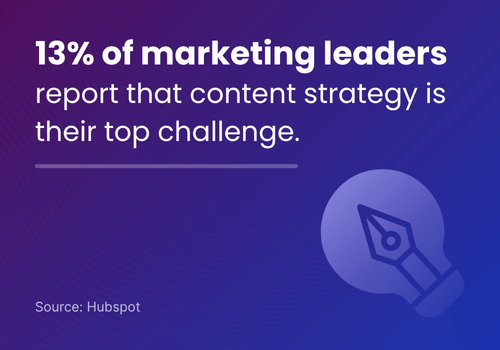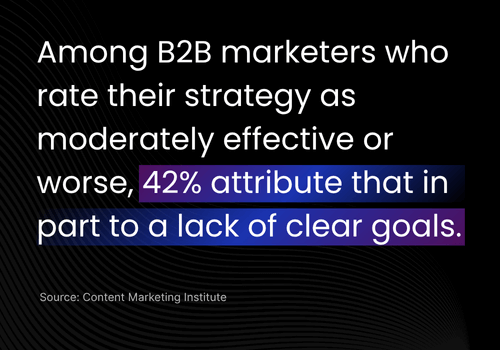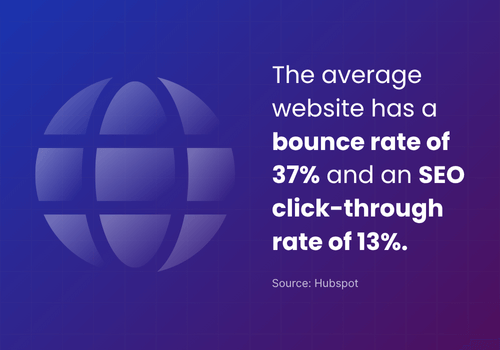
Is your content marketing strategy generating real demand or quietly costing you leads and revenue?
Content audits are designed to answer that question.
While it’s often mistaken as simple digital housekeeping—fixing broken links, updating outdated pages, or refreshing stale CTAs—a strategic audit can be far more impactful than seasonal maintenance.
When executed properly, it’s capable of uncovering what resonates most deeply with your audience, identifying hidden areas holding back performance, and highlighting new opportunities to strengthen your message and amplify your funnel.

This matters because content powers every aspect of your marketing: it fuels organic traffic, nurtures subscribers, drives conversions, and transforms prospects into loyal customers.
By conducting a focused and strategic audit, you ensure that every piece of content aligns clearly with business goals—driving deeper engagement, nurturing stronger leads, and accelerating revenue growth.
So how can you do this effectively?
It starts with clarity of purpose.
Let’s walk through each stage of a strategic content audit, beginning with defining what you aim to achieve.
Step 1: Clearly Define Your Goals
Before diving into spreadsheets or analytics dashboards, clarify your intent.
The reason behind your audit should link directly back to both your content marketing objectives and broader business outcomes.

For instance, you might aim to:
- Drive more website traffic through SEO-optimized content.
- Boost audience engagement metrics like time on page.
- Enhance conversion rates from content to sales leads.
- Generate higher-quality leads from existing content.
- Identify content gaps and new topical opportunities.
- Evaluate performance and impact of specific content creators or authors.
Whatever the goal may be, defining it clearly sets the foundation for an audit that's intentional, purposeful, and directly tied to business outcomes.
Big Takeaway
Explicitly stating your audit goals ensures alignment between content marketing actions and business results.
This is how you ensure your audit remains forward-looking, and not just a matter of identifying flaws that aren’t fixed.
Step 2: Inventory and Catalog Your Existing Content Assets
With your goals clear, it’s time to gather and organize your content.
Whether you’re auditing all digital assets (blogs, webinars, podcasts, courses, and press releases) or focusing narrowly (e.g., only blogs), methodical aggregation is the next step in your process.
Begin by compiling a comprehensive list of URLs you wish to audit.
This could be done manually or accelerated by tools such as Semrush or Screaming Frog, often saving significant time and improving accuracy.
Next, structure your content inventory clearly, categorizing it based on your objectives.
Consider groupings like:
- Funnel stages (awareness, consideration, decision)
- Content format (blog, video, podcast)
- Date published
- Content length
An organized inventory might look something like a detailed spreadsheet, with all of the relevant information laid out in separate fields. The idea is to provide an overall, but actionable view of all your content.
Big Takeaway
A meticulous catalog makes content analysis actionable and manageable, laying the groundwork for informed decisions that lead to better results
Step 3: Enrich Your Audit with Performance Data
Now that you’ve established a bird’s eye view of your content, it’s time to add meaning to it.
Enrich your content spreadsheet with relevant performance data from platforms like Google Analytics. Key metrics could include website traffic, referral links, average time on page, bounce rate, and—most importantly—conversion rate.

Connecting performance data to individual pieces of content allows you to clearly see which assets attract engagement, resonate deeply, or fail to capture audience attention.
Big Takeaway
Adding data-driven insights to your inventory turns a static content list into dynamic information that can guide strategic content decisions.
Step 4: Deep Dive Into Content Analysis
Now comes the crucial analytical phase.
Use filters or pivot tables to manipulate data, uncover correlations, and reveal insights.
Look closely at:
- Assets with exceptional engagement (high time-on-page).
- Content that drives substantial web traffic.
- Pages with extremes in bounce rates.
- Assets with very high or very low conversion rates.
- Pages currently ranking prominently in SERPs.
Identifying these patterns highlight areas for optimization and pinpoint strategic opportunities.
Big Takeaway
Detailed content analysis is the meat and potatoes of your content audit. Use this information to illuminate exactly where efforts should be intensified, refocused, or eliminated.
Step 5: Craft Your Strategic Content Action Plan
With clear insights in hand, it’s time to craft targeted action plans for each content asset or category.
Typical actions emerging from this stage of the audit include:
Repurposing High-Performing Content
Transform high-engagement blog posts into social posts, webinars or podcast episodes, maximizing their value.

Evergreening Older or Underperforming Content
Refresh outdated pieces by updating statistics, improving SEO practices, or expanding the depth of information, breathing new life into stale assets.
Revamping Calls-to-Action (CTAs)
Look for poorly performing CTAs. Identify what’s not working. Then, replace outdated or irrelevant banners to enhance click-through and conversion rates.
Integrating Video Content
Incorporate videos strategically on underperforming pages. Studies indicate video can boost web traffic and significantly increase user dwell time.
Technical SEO Optimization
Revise titles, headings, meta descriptions, alt text for images, and build internal linking structures to enhance discoverability.
Big Takeaway
A content audit isn't complete until each asset has a defined improvement or amplification strategy aligned directly with your initial goals.
Turning these insights into clearly defined action steps transforms audits from exercises into strategic growth initiatives.
Turning Your Audit Into Action
As we promised in the introduction, following these five steps will reveal if your content marketing strategy is effective.
But that’s not all this guide will do. When you turn the audit’s insights into action, you’ll also ensure your content is optimized to drive conversions.
Whether you're a marketer managing in-house campaigns, an agency striving to boost client results, or a media buyer focused on performance, your audit provides the clarity you need to move decisively forward.
Use these insights to elevate every content asset. The work you put in will fuel engagement, nurture stronger leads, and increase sales. That means short-term wins and long-term growth.
You may also like

How To Use Storytelling In Marketing
Make your customer the hero—use the Hero’s Journey to craft stories that inspire action and build stronger brand connections.

How Hypelocal Won Over An Online Jewellery Retailer With A 937% ROAS
Hypelocal’s ad strategy provided this jewellery retailer with $420K revenue and 937% ROAS.



